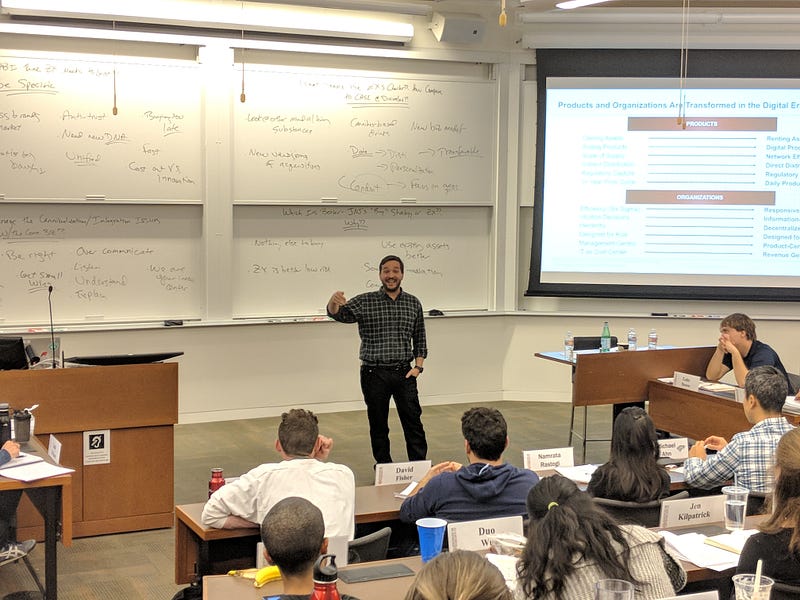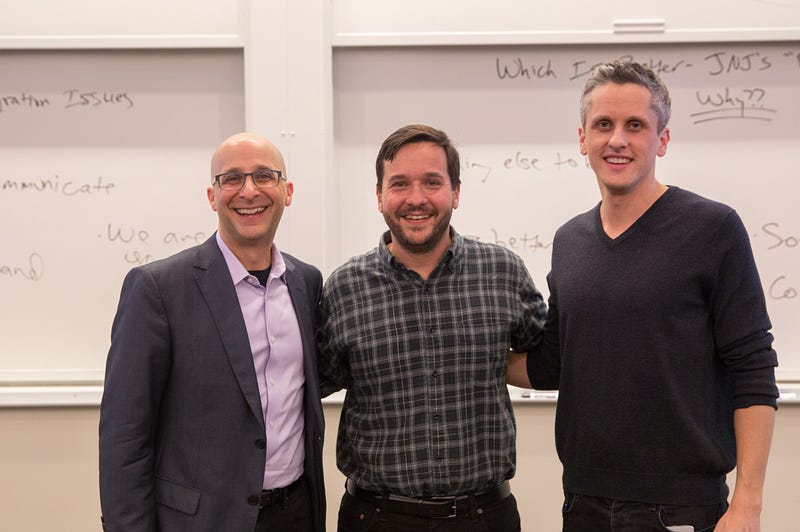This article was written by XSeed Partner, Robert Siegel and in The Industrialist’s Dilemma.
With annual revenues of close to $50B and a market capitalization of $180B, AB InBev is one of the truly global CPG behemoths. With highly recognized brands found on almost every continent, the company has grown via an aggressive entrepreneurial culture combined with an equally aggressive acquisition strategy. But several years ago, CEO Carlos Brito (GSB ’89) tasked Pedro Earp with the role of Chief Disruptive Growth Officer, with the goal that Earp would help the company find new ways to scale than had been done in the past. As with many large companies, AB InBev is seeking to add growth through a combination of organic activities in addition to growth via their balance sheet. And as we learned from Earp, wrestling with the successes of the past with changing customer tastes are only a couple of the the challenges confronting the firm.

ZX Ventures — New to Big Versus Big to Bigger
A consistent battle for every large organization is achieving continued growth as a company scales in size. In the context of AB InBev, which grew over the last several decades through a series of out-sized acquisitions and mergers, the company achieved its global footprint almost entirely by adding existing businesses. But four years ago, the company understood that since they owned a disproportionate amount of the major beer brands around the world, further growth would need to be achieved through new sources and new capabilities.
Earp ended up forming a new organization inside of the company called ZX Ventures — which took its name from the word “Zythology,” the study of beer, and X for “Experience.” Despite his group’s being separate from the core businesses of the company, the team was tasked to look for new products, to find new methods of doing business and to integrate its successful learnings and activities back into the regional zones of the company.
One of the more interesting insights that Earp shared was the challenge the company has faced of adding the competency of going from “New to Big versus Big to Bigger.” The leadership team at AB InBev has excelled at the latter; whether acquiring large organizations such as SABMiller for $100 billion or through the addition of numerous craft beers, AB InBev has been one of the most successful global companies at adding scale through successful acquisitions and consolidation. Yet, the Board and leadership team knew that the company needed to add a different type of muscle and capability to the organization: With customer tastes changing and upheavals both in channels and in how customers want to engage with brands, AB InBev not only did not have the ability to explore new ways of doing business, but they also lacked the ability to grow new opportunities that would spontaneously arise from either inside or outside of the company.
This awareness was particularly well captured in Earp’s comment on the difficulty of growing new initiatives inside of the company. While his ZX group is looking at the “obvious needs” of how to drive internal data consolidation, the impact of eCommerce and other well-known challenges, his comment that AB InBev needs to learn how to grow from “New to Big” struck us as particularly impactful. When a company needs to add billions of dollars in new revenue each year, learning how to start, scale, and perhaps most importantly, stick with a new business was an insight and commentary on incumbent culture that we have seen across many of the firms we have studied and from the guests in our class.
On missed opportunities: We always saw the trends that were coming, but it wasn’t a lack of knowledge – it was a lack of execution. –Pedro Earp, Chief Disruptive Growth Officer @ABInBev #IndusDilemma
— Stanford Business (@StanfordGSB) March 13, 2018
Know Your Customer
Earp made another comment that caught the students’ attention: He posited that Google and Amazon might actually know more about AB InBev’s customers than AB InBev does. His perspective was that through digital relationships these giants have with end users, those companies know what beer brand searches consumers make, what attempts people make to find where they can buy products, and also which inquiries are made about competing beers.
Interestingly, even though selling beer through eCommerce runs up against issues of regulation and economic viability (beer is both heavy to ship and when people want it they tend to want it immediately), Earp and his team understand that they have to get closer to end users, and mass marketing efforts such as well recognized and popular Super Bowl ads cannot provide the intimacy and insights on customers’ wants and desires.
Stated differently, the ways in which AB InBev needs to engage with its customers needs to shift from the very big (Whaassuuupp?!?!) to the very small — and they need to do it quickly. In this context, digital provides insights to a CPG company that is necessary not only to understand changing consumer tastes, but highlighted, once again, the notion that the insights of non-traditional competitors might give unfair competitive advantage against the incumbents — and a new entrant could up-end the traditional market in a way that may be more frame-breaking than the threat which could come from a more traditional CPG company.
What if Amazon decides to get into this business? They know a tremendous amount of information about customers already. And how would AB InBev be able to respond?

Redefine the Mission
As part of changing consumer tastes, a discussion arose about “mission driven” food and beverage startups that are riding the trend away from large-produced packaged food and drinks.
At one level, it would almost be disingenuous for AB InBev to talk about being “mission driven” — they are a mass manufacturer and marketer of scale beverages. Earp stressed, however, that the employees of AB InBev need to see and believe that their goal serves a higher purpose than just selling beer. The employees need to internalize that the company’s goal to is to facilitate “bringing people together for meaningful events.” The power of the language helps shape why people should want to work for a company like AB InBev; while this facilitation is through beverages, the product becomes the tactic to support the broader strategic need of its customers to connect with other people.
A key implication of this need is ZX’s role during this transitory time to bring new skillsets and competencies into the organization, and ultimately to drive these capabilities into the “Zones” around the world. As Brito told Earp when he started the group, Earp needs to “infect” the core business with new ways of thinking, new ways of doing business and new ways of developing products. The mission of ZX, at its core, is more than just adding top-line growth and being a pipeline for new products; rather, it is to fundamentally be a vehicle through which the culture of the company needs to continue to evolve so that it doesn’t get left behind in the normal evolution of consumer tastes and desires.
And this may be Earp’s biggest challenge — to execute on a dual strategy of delivering new business opportunities while also transforming a cultural mind-shift at scale. All while being a nascent and separate organization from the core.
As Earp highlighted, cost cutting has a natural end state. Acquisitions can also serve to hide problems at the core of a company — they may show growth at the top-line, but they don’t show responsiveness to a changing world.
A key goal of ZX, therefore, is to ensure that this capability and responsiveness grows inside the core of the company.
To infect the rest, if you will.
